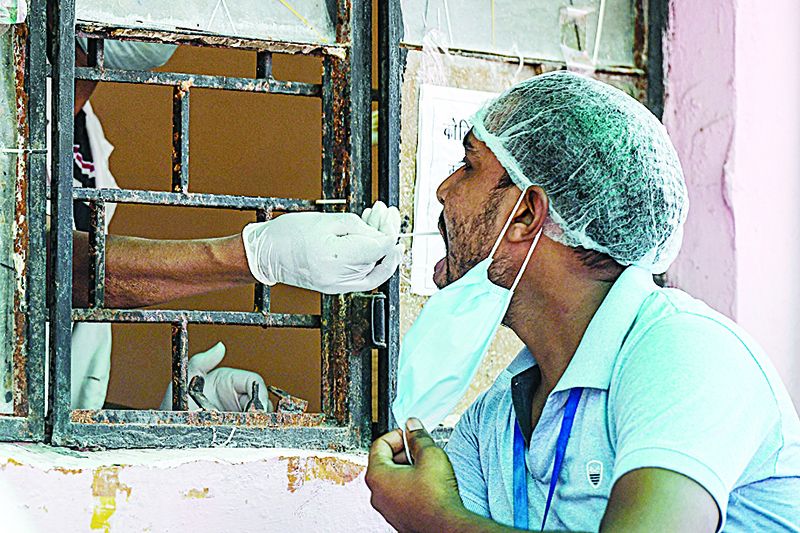
MEERUT: Sarthak Anand says his neighbors treated him like a “criminal” when he got coronavirus, a common experience in India’s vast hinterland where the pandemic - and stigmatization - are now raging. “Even though I have recovered fully, no one wants to come near me,” Anand, a government employee, told AFP outside his home in Meerut, a northern Indian city home to 3.4 million people. On Friday India’s official caseload passed two million, and while previously metropolises like New Delhi and Mumbai were the hotspots, smaller cities and rural areas are now reporting sharp rises.
According to public health expert Preeti Kumar, the probable reason is the return home of millions of migrant workers who were left jobless by India’s sudden lockdown imposed in March. “We are seeing the numbers rise especially in states like Bihar and Uttar Pradesh, and with poorer healthcare systems, it is going to be a challenge,” Kumar told AFP. The poor northern state of Uttar Pradesh, home to roughly as many people as France, Germany and Britain combined, has now seen the pandemic reach almost every district, no matter how remote.
The state has recorded 100,000 cases. Its capital Lucknow is reporting more than 600 new infections every day, compared to only 100-150 just a few days ago. But the official number may be a big underestimate, experts say, with the real scale potentially hugely under-reported because of insufficient testing, and deaths not being properly recorded. Uttar Pradesh has conducted an impressive-sounding 2.8 million tests, according to a senior state official. But given its enormous population of over 200 million people, this equates to just 14,000 tests per million. In the US state of Texas, the rate is almost 10 times higher.
‘Social boycott’
Nationally, India has tested around 16,500 people per million, compared to 190,000 in the United States and 260,000 in Britain, according to a tally by Worldometer. Apart from having one of the world’s lowest rates of spending per capita on health care, part of the reason is that coronavirus sufferers often become pariahs.
This is particularly true in smaller conurbations and in rural areas, where some two-thirds of Indians live and where face masks and social distancing are rare sights. “A new disease with relatively high levels of complications and mortality, with accompanying directives on physical distancing, inevitably leads to fears, apprehensions and... stigma,” said Rajib Kumar, who heads the Centre of Social Medicine and Community Health at Delhi’s Jawaharlal Nehru University. “There’s both the fear of the disease as well as of isolation and quarantine,” Kumar told AFP.
Anand in Meerut said that after becoming infected, he submitted a list of colleagues he had come in contact with to his office so that they could get tested as well. “But some of them were so angry,” he said. “Even my seat in office has been changed. —AFP
I want to feel normal but the social boycott hurts.” Local media have reported incidents of returning migrant workers being barred from entering their villages by barricades set up on the outskirts with signs like “Outsiders not allowed”.
Authorities have inadvertently done their bit with quarantine stickers outside the homes of infected people and putting “danger ahead” signboards in containment zones. Ajay Kumar, another recovered coronavirus patient, said neighbors have stopped their children playing with his. “In my (neighborhood) they are not even allowing the domestic help to work at my place. It makes me so sad and angry at the same time,” Kumar said. “The disease did not kill me but the discrimination will.” - AFP
.jpg)
